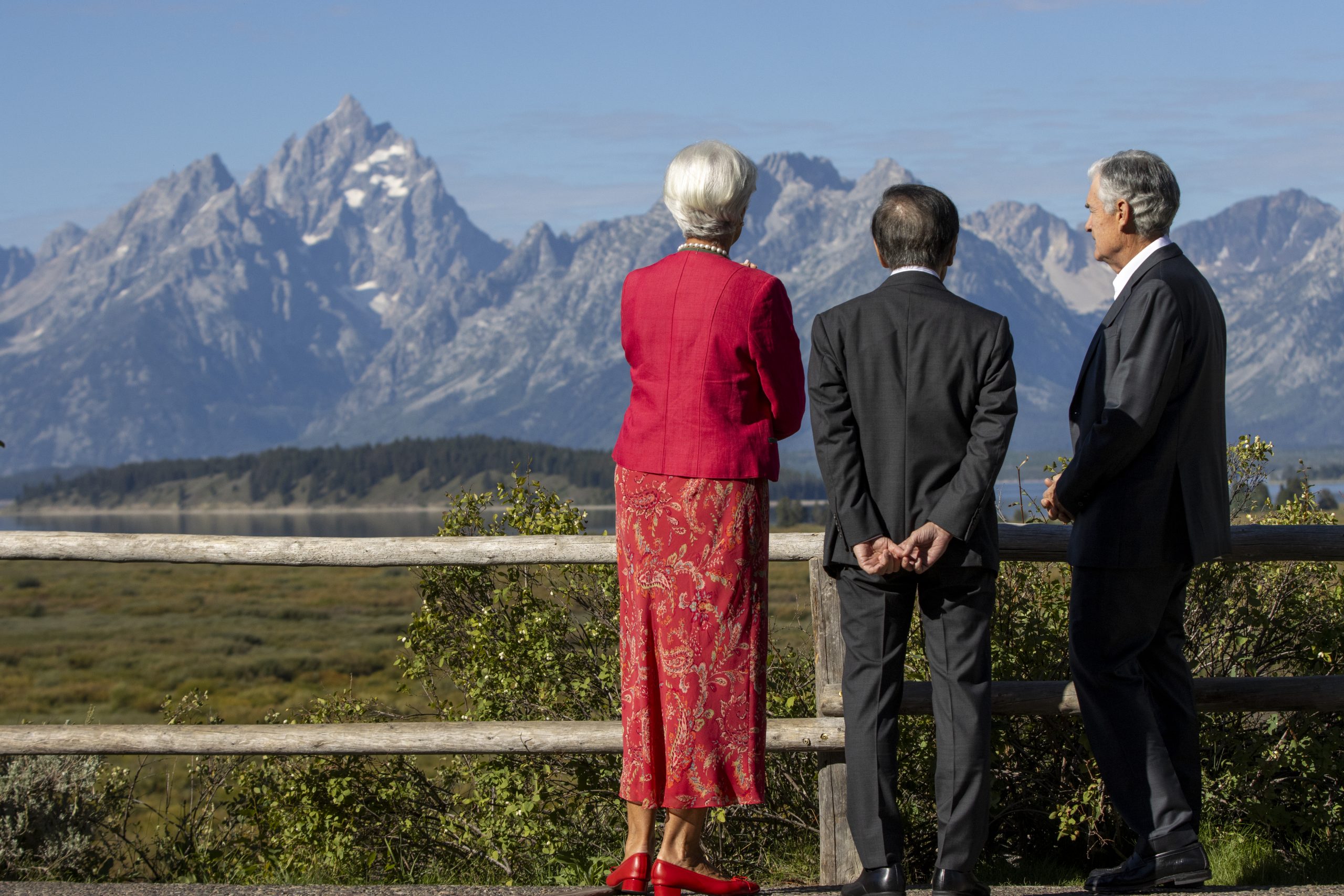President of the European Central Bank Christine Lagarde, Bank of Japan Gov. Kazuo Ueda and chair of the Federal Reserve Jerome Powell pictured at the Jackson Hole Economic Symposium in 2023. Natalie Behring/Getty Images
It may look like a routine gathering of economists, central bankers and academics. But every August, the Jackson Hole Economic Symposium makes headlines, moves markets and fuels policy debates. Hosted since 1978 by the Federal Reserve Bank of Kansas City, the annual meeting convenes roughly 120 participants to discuss new research and pressing economic issues. Over time, it has also become a key stage for signaling future financial trends and monetary policy.
The symposium’s first editions in the late 1970s rotated across different locations. By the early 1980s, organizers settled on the Jackson Lake Lodge in Jackson Hole, Wyo., a valley encircled by the Grand Teton mountains. The site has a storied past. It was once owned by financier John D. Rockefeller Jr., who began buying up land in the region in the 1920s, and later donated it to the National Park Service.
The choice of Jackson Hole wasn’t just about scenery. Hoping to entice then-Fed chair Paul Volcker, an avid fly fisherman, the Kansas City Fed strategically picked the valley for its trout-filled streams. Volcker’s appearance in 1982 proved a turning point, establishing a tradition of central bankers making the summer trip.
Ironically, the setting underscores economic divides. Teton County, which includes Jackson Hole, is the most unequal county in the entire U.S., according to the Economic Policy Institute. There, the top 1 percent earn more than 142 times the income of the remaining 99 percent.
 A view of the Jackson Lake Lodge, which hosts the symposium annually. Natalie Behring/Getty Images
A view of the Jackson Lake Lodge, which hosts the symposium annually. Natalie Behring/Getty Images
What began as a research-heavy conference now revolves around a tradition set by Volcker in 1982: the Fed chair’s opening speech. It is also the only publicly streamed portion of the conference. The Kansas City Fed preserves the event’s exclusivity by keeping invitations limited, restricting media access, and charging attendees a participation fee.
Each symposium is built around a timely theme. Media interest spiked in 2007, when the focus on “Housing, Housing Finance and Monetary Policy” foreshadowed the financial crisis. Since then, the gathering has only grown more influential as central banks’ role in economic stability has come into sharper view.
This year’s theme, “Labor Markets in Transition: Demographics, Productivity, and Macroeconomic Policy,” will take center stage between Aug. 21 and Aug. 23. The conference will open with remarks from Fed chair Jerome Powell, who’s expected to outline the central bank’s approach to inflation, employment and long-term growth.
The details of Powell’s speech remain under wraps until tomorrow. But one certainty is that his words will be parsed closely. In past appearances, Powell has used the platform to signal interest rate changes and unveil new strategic frameworks. Last year, his address marked a pivotal shift in the Fed’s policy by signaling rate cuts after a long streak of increases to fight inflation.


